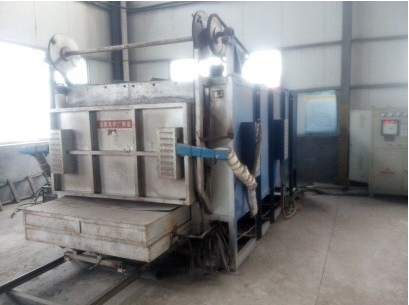In production and processing, in case of unexpected problems, there must be corresponding solutions. Sometimes forgings occasionally encounter deformation during the heat treatment process, so what are the general rules when encountering deformation? Woolen cloth? Let’s take a look.
1. Shape distortion caused by thermal stress. The deformation caused by thermal stress mainly occurs in the initial stage of thermal stress, when the interior of the forging is in a high-temperature state with good plasticity. Therefore, plastic deformation occurs when the initial thermal stress (tensile stress in the surface layer and compressive stress in the core) exceeds the yield strength of the steel at this temperature. The forging loses its original shape under the action of multi-directional compressive stress at the core, so that the shape tends to be spherical. For example, cylindrical forgings tend to have a “waist drum” shape, that is, the diameter expands and the length decreases; for discs with a diameter greater than thickness, the thickness increases, and the diameter decreases; cube-shaped forgings tend to be spherical.
The size of the deformation caused by thermal stress depends on the relationship between the internal stress and the yield strength. The steel with higher high-temperature strength has less deformation. For this deformation, the uneven temperature distribution is the main reason. Therefore, the faster the cooling rate, the greater the deformation; the higher the quenching heating temperature, the greater the deformation; the larger the cross-sectional area of the steel, the greater the deformation; the worse the thermal conductivity of the steel, the greater the deformation, etc. In short, any heating and cooling factors that affect heat transfer and prevent uniform temperature will cause forging deformation.
2. Shape distortion caused by tissue stress. Deformation caused by tissue stress also occurs in the early stage when the tissue stress is at its greatest. In the early stage of cooling, the temperature difference of the section is large, and the surface layer of the forging is first cooled to below the Ms point, and the transformation from austenite to martensite occurs, but the core temperature is high, and it is still in the austenite state, with good plasticity and low yield strength. The tissue stress at this time is compressive stress on the surface and tensile stress in the heart, which leads to deformation; that is, it is equivalent to a container with a vacuum inside, and the deformation caused by it is opposite to the deformation trend caused by thermal stress. The deformation trend of forgings is to elongate in the direction of the largest dimension, shrink in the direction of the smallest dimension, the surface is concave, and the edges and corners become sharp. For cylindrical forgings whose length is greater than the diameter, the diameter is reduced and the length is elongated; for cube-shaped forgings, each surface tends to be concavely deformed; for disc-shaped forgings, the diameter increases and the thickness decreases.
When the structural stress causes deformation, the surface layer expands in volume due to martensitic transformation and will be plastically deformed by the tensile stress generated in the core. If the internal stress is high, there is a danger of forming quench cracks.
3. Volume deformation caused by tissue transformation. The microstructure of the forgings before quenching is generally a mixed structure of ferrite and cementite, that is, a pearlite-type structure, and a martensitic structure after quenching. Due to the different specific volumes of these structures, volume changes will be caused before and after quenching, resulting in deformation. As the carbon content increases, the volumetric deformation increases. In order to reduce the deformation of forgings during quenching, the carbon content of martensite in the steel can be controlled. For high-carbon steel or high-carbon high-alloy steel, the amount of retained austenite can be controlled to achieve the purpose of micro-deformation quenching.
In fact, the deformation of forgings in actual production is very complicated, and it is affected by many factors. It is necessary to comprehensively analyze the situation according to the situation, find out the main contradiction, and take reasonable measures to prevent and eliminate it.


